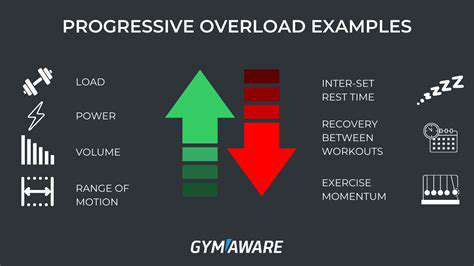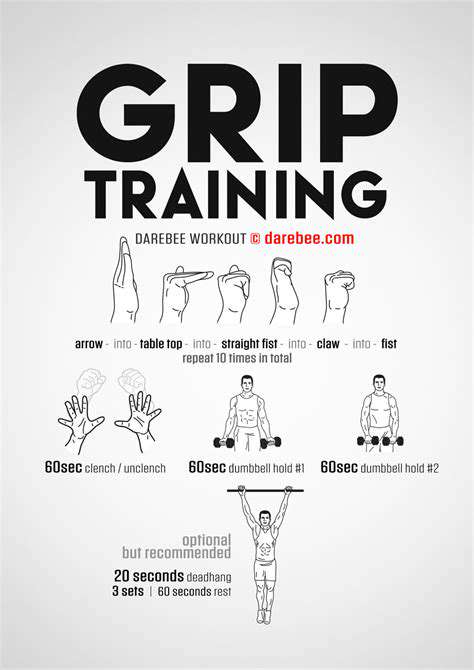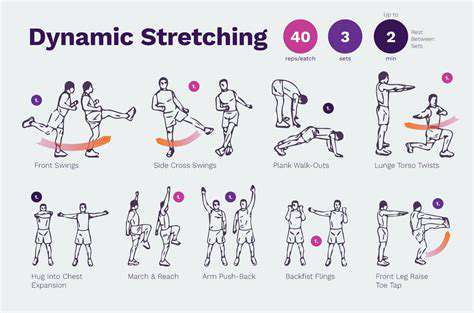Exercises to Boost Wrist Strength
Using Resistance Bands for Wrist Strengthening
Benefits of Wrist Strengthening with Resistance Bands
Resistance bands offer a portable and affordable way to strengthen wrist muscles, crucial for everyday activities like gripping, lifting, and typing. Strengthening these muscles can significantly reduce the risk of wrist injuries, especially for individuals involved in repetitive movements. This targeted approach helps improve overall hand-eye coordination and dexterity, making daily tasks easier and more efficient. Furthermore, wrist strengthening exercises with resistance bands can contribute to a greater sense of overall physical well-being.
Using resistance bands for wrist strengthening is a low-impact exercise, making it suitable for people of all fitness levels, from beginners to experienced athletes. It's particularly beneficial for individuals recovering from injuries or those seeking to improve their wrist stability and prevent future problems. The progressive nature of resistance band workouts allows for gradual increases in intensity, ensuring a safe and effective training regimen.
Choosing the Right Resistance Band
Selecting the appropriate resistance band is paramount for a productive workout. Consider the level of resistance you require. Beginners should start with lighter bands to avoid strain and gradually transition to heavier bands as strength increases. A lighter resistance band is ideal for warming up and incorporating into daily exercises. Heavier bands provide more resistance, allowing for progressive overload and more advanced exercises.
Look for bands made of high-quality materials that can withstand repeated use and maintain their elasticity. Bands with comfortable handles and adequate length are essential for proper grip and exercise form, minimizing the risk of injury. Consider the size and length of the bands to suit your body type and the specific exercises you plan to perform. This will ensure optimal results and prevent discomfort.
Effective Wrist Strengthening Exercises
Various exercises can be performed using resistance bands to target different wrist muscles. Wrist curls, for example, involve flexing the wrist while resisting the band's pull. This exercise strengthens the flexor muscles of the wrist. Extension exercises, where you extend your wrist against the resistance of the band, work the opposing extensor muscles. These are vital for wrist stability and injury prevention.
Radial and ulnar deviations, which involve moving your wrist side to side against resistance, also contribute to wrist strength and flexibility. Incorporating these exercises into a routine will create a balanced workout for the wrist muscles. Remember to maintain proper form throughout each exercise to maximize effectiveness and minimize the risk of injury.
Proper Form and Safety Precautions
Maintaining proper form is crucial for maximizing the effectiveness of resistance band exercises and preventing injuries. Ensure your wrists are in a neutral position throughout the exercises to avoid strain or stress on the joints. Focus on controlled movements, avoiding jerky or sudden motions. Gradually increase the resistance as your wrist strength improves.
Listen to your body and stop if you feel any pain. Proper warm-up and cool-down routines are essential to prepare your muscles and prevent injury. If you have any pre-existing wrist conditions, consult with a healthcare professional before starting a resistance band workout program. Always use proper form and technique to avoid injury.
Progression and Maintenance
As your wrist strength improves, gradually increase the resistance of the bands or the number of repetitions. This progressive overload is essential for continued muscle growth and strength development. Consistency is key to seeing results. Aim for regular workouts, ideally a few times per week, to maintain and build wrist strength.
To maintain the gains you achieve, incorporate wrist strengthening exercises into your regular fitness routine. This will help prevent muscle atrophy and maintain the strength you have worked so hard to build. Remember to listen to your body and adjust the exercises as needed to maintain proper form and avoid injury.











